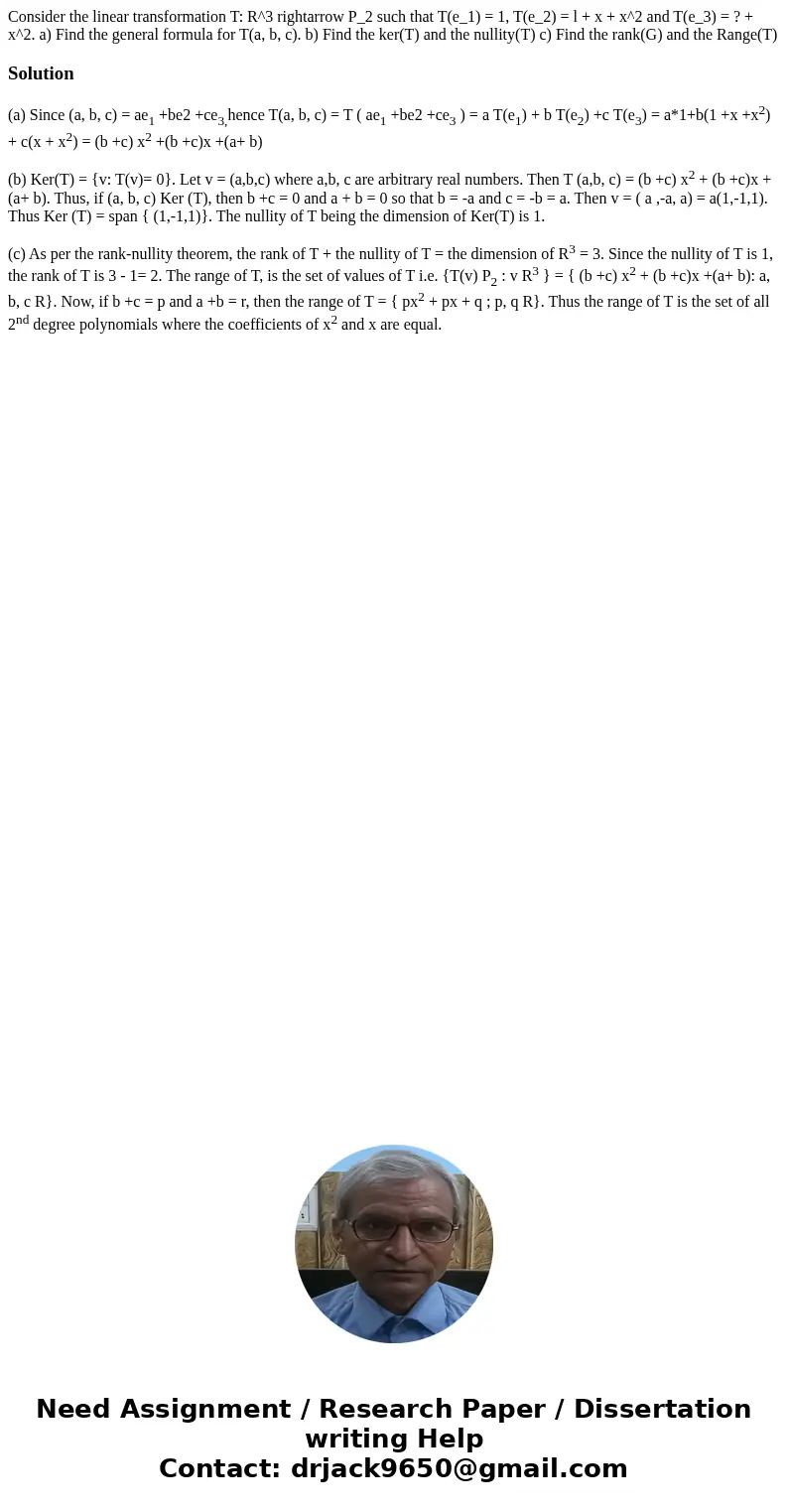Consider the linear transformation T R3 rightarrow P2 such t
Solution
(a) Since (a, b, c) = ae1 +be2 +ce3,hence T(a, b, c) = T ( ae1 +be2 +ce3 ) = a T(e1) + b T(e2) +c T(e3) = a*1+b(1 +x +x2) + c(x + x2) = (b +c) x2 +(b +c)x +(a+ b)
(b) Ker(T) = {v: T(v)= 0}. Let v = (a,b,c) where a,b, c are arbitrary real numbers. Then T (a,b, c) = (b +c) x2 + (b +c)x +(a+ b). Thus, if (a, b, c) Ker (T), then b +c = 0 and a + b = 0 so that b = -a and c = -b = a. Then v = ( a ,-a, a) = a(1,-1,1). Thus Ker (T) = span { (1,-1,1)}. The nullity of T being the dimension of Ker(T) is 1.
(c) As per the rank-nullity theorem, the rank of T + the nullity of T = the dimension of R3 = 3. Since the nullity of T is 1, the rank of T is 3 - 1= 2. The range of T, is the set of values of T i.e. {T(v) P2 : v R3 } = { (b +c) x2 + (b +c)x +(a+ b): a, b, c R}. Now, if b +c = p and a +b = r, then the range of T = { px2 + px + q ; p, q R}. Thus the range of T is the set of all 2nd degree polynomials where the coefficients of x2 and x are equal.

 Homework Sourse
Homework Sourse